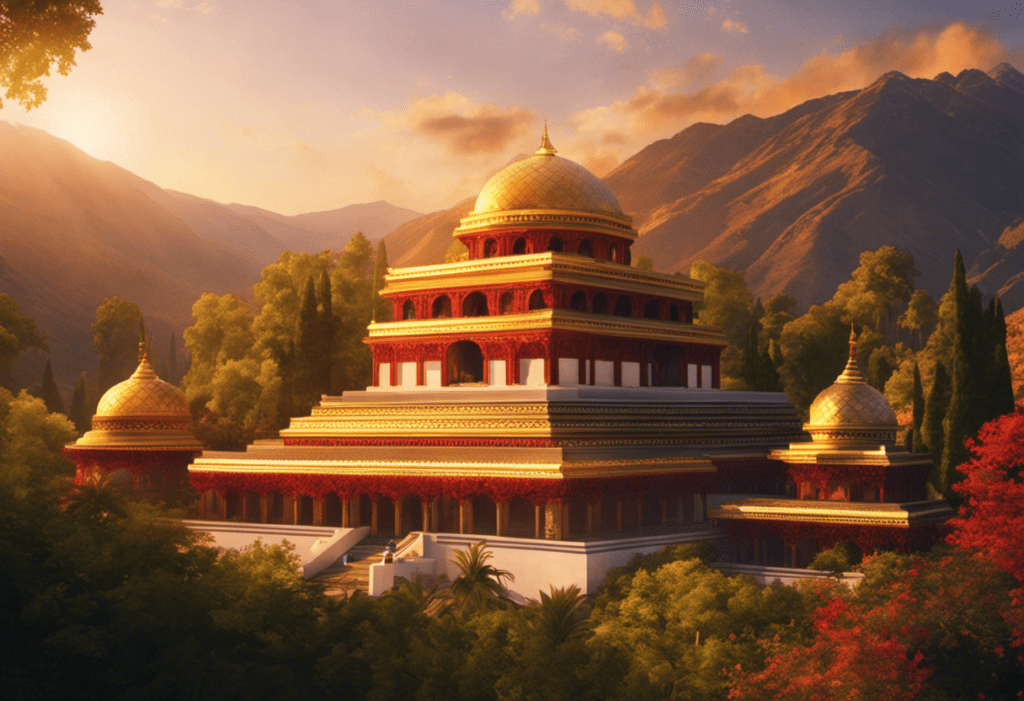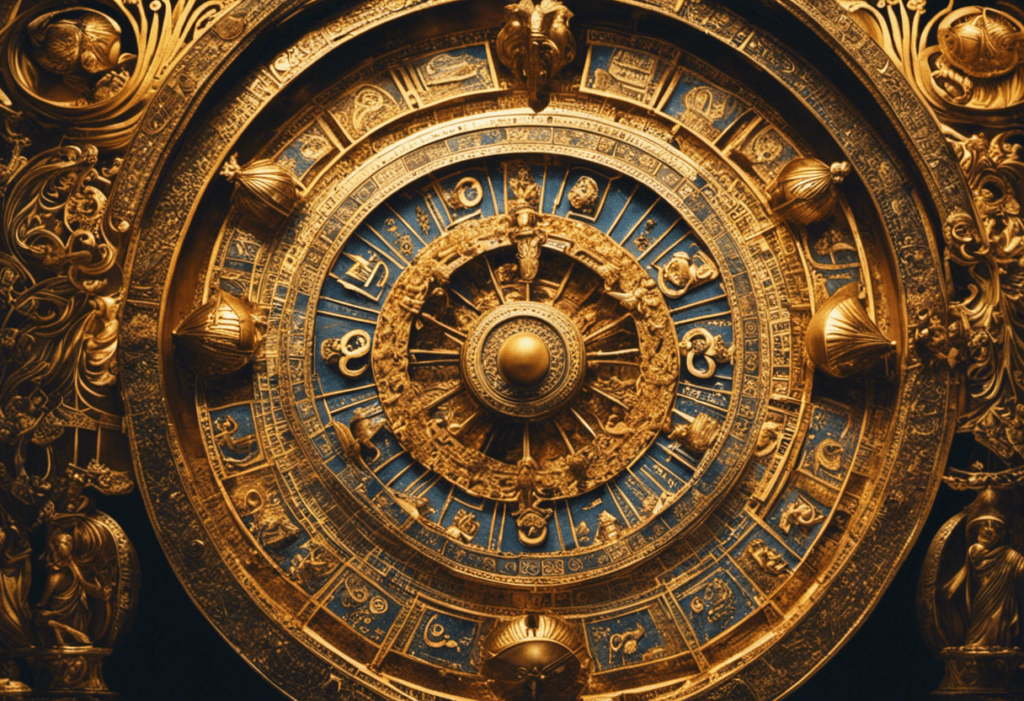In the vast tapestry of human creativity, the Zoroastrian calendar serves as an intricate thread that weaves through literature and art, imbuing them with rich symbolism and profound meaning.
Like a cosmic map, this ancient calendar guides us through the rhythms of time, unveiling the interplay between celestial order and earthly rituals.
From ancient texts to modern interpretations, this article explores the profound influence of the Zoroastrian calendar on literary and artistic expressions, inviting readers to delve into its captivating depths.
Key Takeaways
- The Zoroastrian calendar was developed in ancient Persia by Zoroaster in the 6th century BCE and is a solar calendar with 12 months of 30 days each.
- The calendar includes 5 additional sacred days called ‘Gatha’ days and is designed to align with the sun and other celestial bodies, determining the timing of religious festivals, rituals, and important events.
- Zoroastrian calendar art provides insight into religious beliefs and cultural values, with depictions of the sun representing divine light and life, the winged disc symbolizing the eternal struggle between good and evil, and floral motifs representing the cycle of life and renewal.
- The Zoroastrian calendar is extensively discussed in the Avesta, the primary collection of Zoroastrian sacred texts, and is represented in ancient visual arts, such as manuscripts and stone carvings, offering insights into religious practices, beliefs, and cosmology.
The Origins of the Zoroastrian Calendar


The origins of the Zoroastrian calendar can be traced back to ancient Persia and its influence on the religious and cultural practices of the Zoroastrian community. This calendar is believed to have been developed by Zoroaster, the founder of Zoroastrianism, in the 6th century BCE.
The Zoroastrian calendar is a solar calendar that consists of 12 months, each having 30 days. Additionally, there are five additional days at the end of the year, known as ‘Gatha’ days, which are considered sacred.
The development of the Zoroastrian calendar was closely tied to the religious beliefs and practices of the Zoroastrians. It was designed to align with the cycles of the sun and other celestial bodies, reflecting the belief in the divine order of the universe. The calendar played a crucial role in determining the timing of religious festivals, rituals, and important events in the Zoroastrian community. It also helped in agricultural planning and determining the auspicious times for various activities.
Over time, the Zoroastrian calendar underwent certain modifications and adaptations, particularly during the Sassanian period in the 3rd to 7th centuries CE. These changes were made to align the calendar more accurately with astronomical observations and to incorporate elements from other calendars prevalent in the region. Despite these modifications, the core structure and principles of the Zoroastrian calendar have remained intact, continuing to be observed by Zoroastrians around the world.
Symbolism and Meaning in Zoroastrian Calendar Art
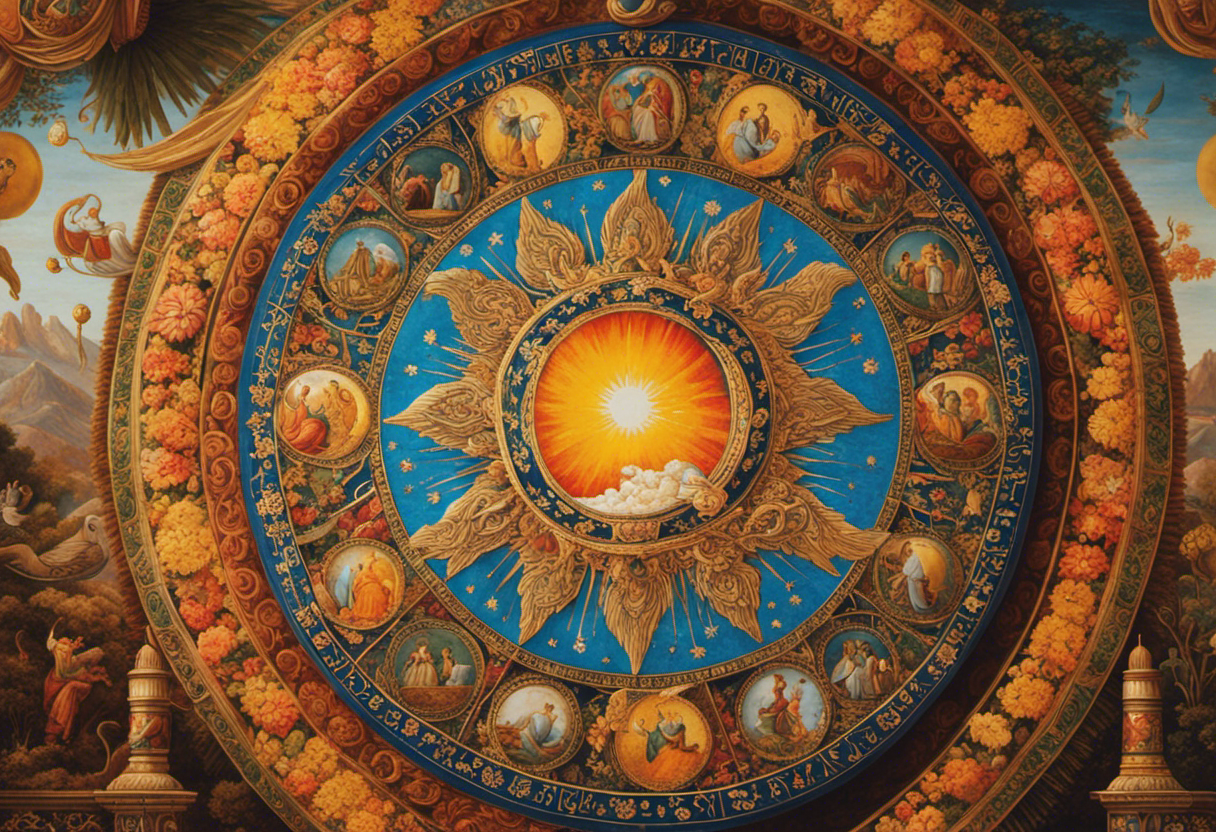

Significantly, the symbolism and meaning in Zoroastrian calendar art provide insight into the religious beliefs and cultural values of the Zoroastrian community. The Zoroastrian calendar, known as the Zoroastrian religious calendar or the Zoroastrian calendar of festivals, has been depicted in various forms of art throughout history. These artworks often incorporate symbolic elements that are rich in meaning and provide a deeper understanding of the Zoroastrian faith.
Interpretations of Zoroastrian calendar symbolism vary, but some common themes can be found. One such symbol is the depiction of the sun, which represents the divine light and the source of life and energy in the Zoroastrian religion. The sun is often depicted as a radiant orb with rays extending outward, symbolizing the spread of divine knowledge and enlightenment.
Another symbol frequently found in Zoroastrian calendar art is the winged disc, known as the Faravahar. This symbol represents the eternal struggle between good and evil and the importance of making righteous choices. The wings signify the human capacity for free will, while the circle represents eternity and the divine nature of the soul.
Zoroastrian Calendar in Ancient Literature


How extensively is the Zoroastrian calendar discussed in ancient literature, and what insights does it provide into the religious practices of the Zoroastrian community?
The Zoroastrian calendar, also known as the Zoroastrian religious calendar or the Parsi calendar, is a key element of the Zoroastrian religious tradition. While it is primarily used to determine religious festivals and rituals, its influence is not limited to religious practices alone.
In ancient literature, the Zoroastrian calendar is discussed in detail, particularly in the Avesta, the primary collection of Zoroastrian sacred texts. These texts provide information about the different months, days, and festivals that are part of the Zoroastrian calendar. They also shed light on the significance of these dates and the rituals associated with them.
Additionally, the Zoroastrian calendar finds representation in various forms of ancient visual arts. Depictions of the calendar can be found in Zoroastrian manuscripts and stone carvings, showcasing the intricate details of the calendar’s structure and its connection to the wider religious cosmology.
Overall, the extensive discussion of the Zoroastrian calendar in ancient literature and its representation in visual arts provide valuable insights into the religious practices, beliefs, and cosmology of the Zoroastrian community.
Exploring the Cosmic Order in Zoroastrian Calendar Poetry
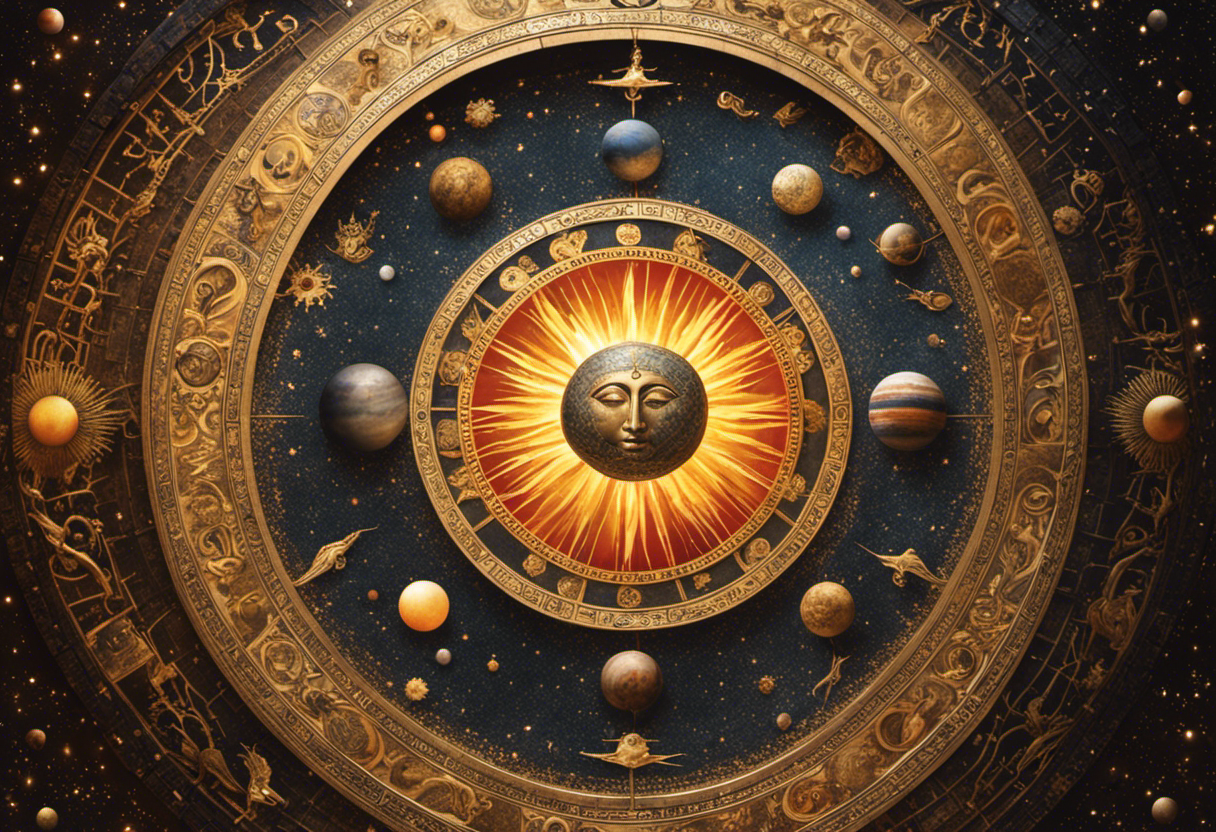

Our exploration of Zoroastrian calendar poetry reveals the intricate interplay between cosmic order and the poetic expression of religious beliefs. The Zoroastrian calendar, known as the Zoroastrian calendar, is deeply rooted in cosmic symbolism and serves as a guide for the religious practices of the Zoroastrian community. This calendar, with its intricate system of months and days, reflects the cosmic order and the cyclical nature of time.
In Zoroastrian calendar poetry, we find artistic representations of the cosmic symbolism inherent in the calendar. These poetic compositions often describe the celestial bodies and their movements, emphasizing their role in maintaining the cosmic balance. The poets use vivid imagery to depict the sun, moon, and stars, capturing their power and significance.
The poetic expressions in Zoroastrian calendar literature also serve as a means of connecting with the divine. Through these poems, believers express their religious devotion and seek spiritual enlightenment. The intricate interplay between cosmic order and poetic expression in Zoroastrian calendar poetry highlights the deeply ingrained connection between religious beliefs and artistic creativity.
Depicting Zoroastrian Festivals and Rituals in Art
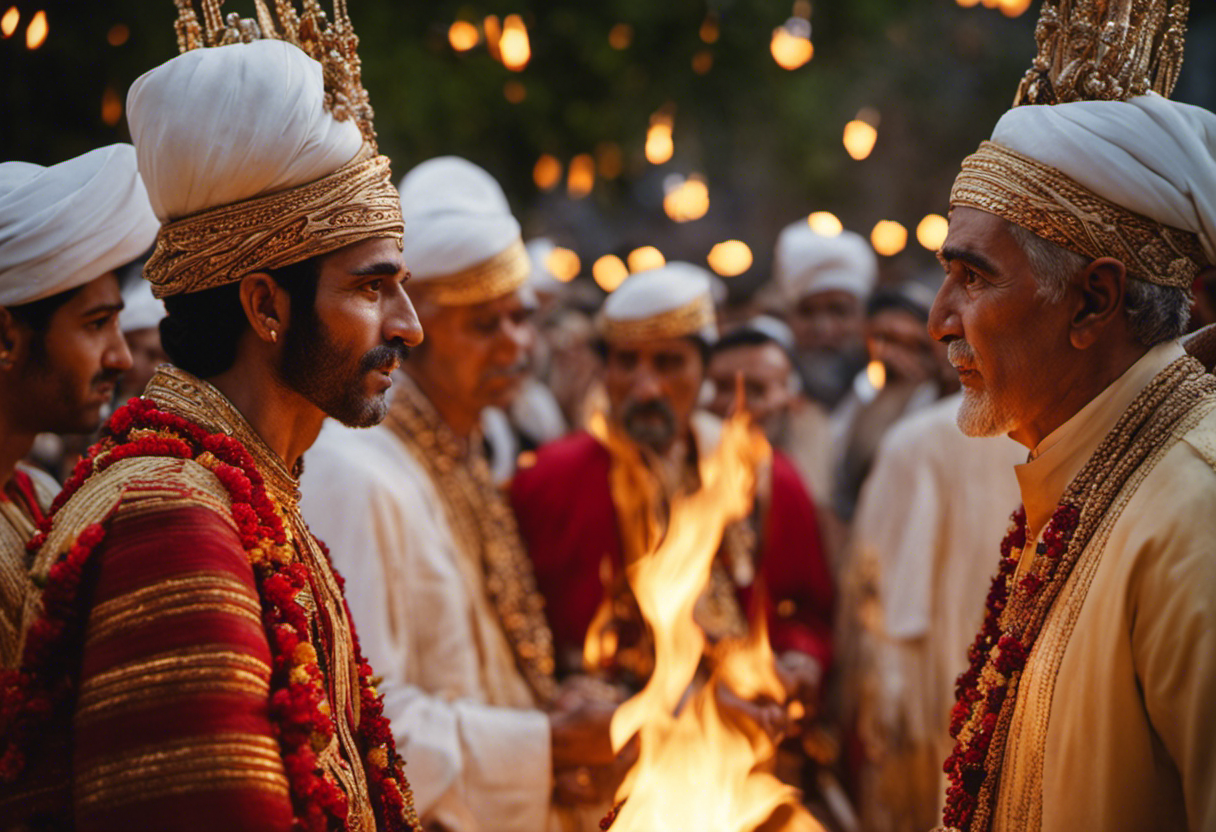

Depicting Zoroastrian festivals and rituals in art offers a rich symbolism that reflects the core beliefs and values of the religion. Artists often incorporate intricate details and vibrant colors to symbolize various aspects of these celebrations, such as the triumph of light over darkness or the eternal cycle of life and death.
These artistic representations not only serve as a visual documentation of Zoroastrian culture and traditions but also hold cultural significance in contemporary works, fostering a deeper understanding and appreciation of this ancient religion.
Symbolism in Zoroastrian Art
The use of symbolism in Zoroastrian art provides a rich visual representation of the festivals and rituals celebrated within the faith. Symbolism plays a significant role in conveying the cultural significance of these festivals and their associated rituals. Here are four key aspects of symbolism in Zoroastrian art:
-
Fire: Fire is a central symbol in Zoroastrianism, representing purity, enlightenment, and divine presence. It is often depicted in art as a sacred flame, symbolizing the eternal flame that burns in Zoroastrian fire temples.
-
Sun and Moon: The sun and moon are important symbols in Zoroastrian art, representing light, knowledge, and the cosmic order. They are often shown in conjunction with fire, emphasizing the connection between the divine and earthly realms.
-
Winged creatures: Birds and other winged creatures symbolize the spiritual realm and the journey of the soul. They are depicted in art as messengers between the earthly and divine realms.
-
Geometric patterns: Zoroastrian art often incorporates intricate geometric patterns, representing order, balance, and harmony. These patterns reflect the cosmic principles of Asha, or truth and righteousness, which are central to the Zoroastrian faith.
Through the use of these symbols, Zoroastrian art provides a visual language that enhances the understanding and appreciation of the festivals and rituals within the faith.
Cultural Significance of Festivals
Zoroastrian festivals and rituals, with their rich cultural significance, are beautifully captured in the art that portrays them. These celebrations and customs hold deep historical significance, reflecting the religious and spiritual beliefs of the Zoroastrian community.
One such festival is Nowruz, the Persian New Year, which marks the beginning of spring and symbolizes renewal and rejuvenation. In Zoroastrian art, Nowruz is often depicted through vibrant paintings and sculptures that showcase the traditional customs associated with the festival, such as the Haft-Seen table and the lighting of bonfires.
Another significant festival is Mehregan, which celebrates the spirit of love, friendship, and harmony. Artistic representations of Mehregan focus on the joyous gatherings, music, dance, and feasts that take place during this festive occasion.
Through their intricate details and symbolism, these artworks provide a visual narrative of the cultural and historical importance of Zoroastrian celebrations.
Influence on Contemporary Works
Exploring the cultural heritage of Zoroastrian festivals and rituals, contemporary artists find inspiration in the vibrant and symbolic elements, incorporating them into their works to capture the essence of these traditional celebrations.
The influence of Zoroastrian festivals can be seen in various forms of art, including fashion and music.
-
Fashion: Designers often draw inspiration from the colorful and ornate costumes worn during Zoroastrian festivals. The intricate patterns, rich fabrics, and traditional motifs are incorporated into modern clothing designs, creating a fusion of ancient and contemporary aesthetics.
-
Music: The Zoroastrian calendar, with its unique festivals and rituals, has also inspired musicians to create compositions that reflect the different moods and themes associated with each celebration. These musical works often incorporate traditional instruments and melodies, providing a glimpse into the rich musical heritage of Zoroastrianism.
Overall, the cultural significance of Zoroastrian festivals continues to inspire and influence contemporary artists, allowing them to pay homage to this ancient tradition through their creative works.
Modern Interpretations of the Zoroastrian Calendar in Literature
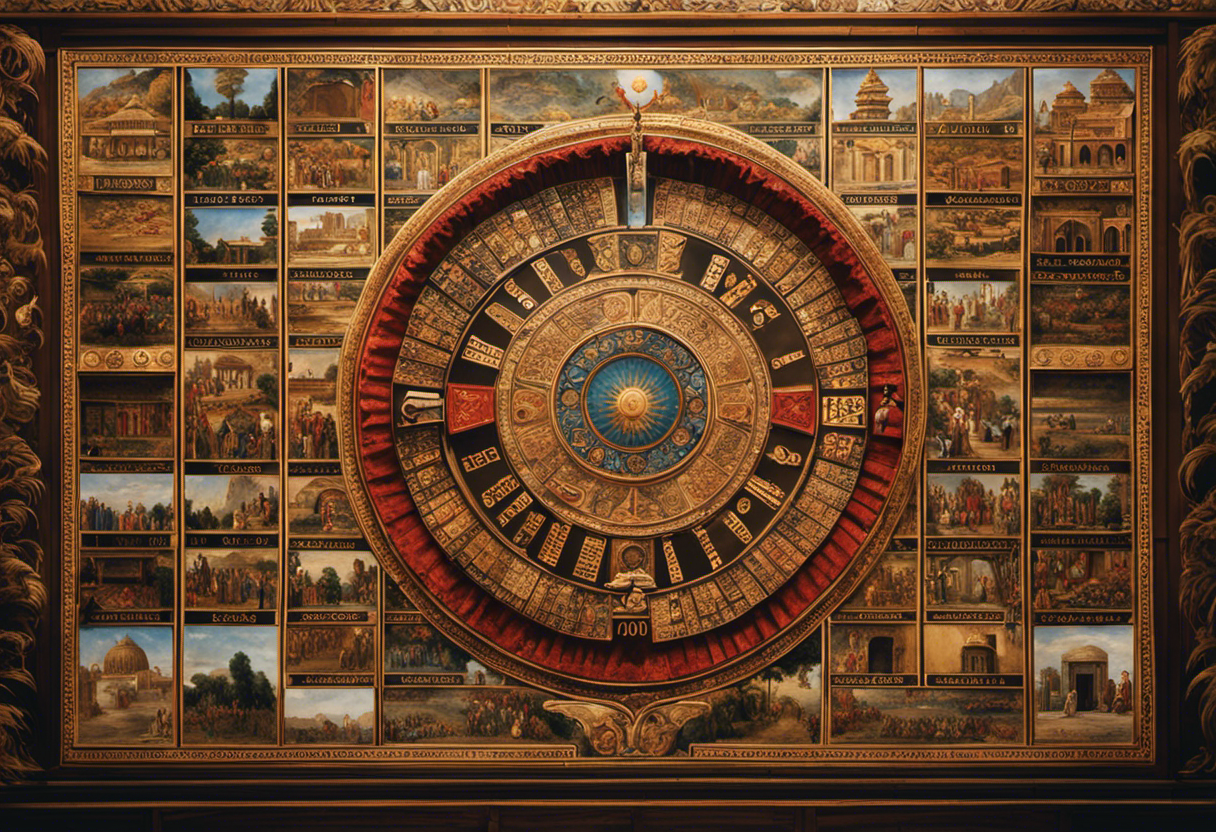

While scholars continue to explore the influence of the Zoroastrian calendar on literature, modern interpretations have emerged that offer fresh perspectives on its significance and symbolism. The Zoroastrian calendar, which is based on the solar year and divided into twelve months, has been a source of inspiration for artists and writers throughout history. However, recent interpretations have delved deeper into the calendar’s symbolism and its connection to broader themes in literature and art.
In modern interpretations, the Zoroastrian calendar is seen as a metaphorical representation of the cycle of life and the passage of time. It is often used to explore themes of mortality, rebirth, and the cyclical nature of existence. Authors and artists have incorporated the calendar into their works to convey a sense of continuity and interconnectedness between past, present, and future.
Furthermore, the Zoroastrian calendar’s association with celestial bodies and natural phenomena has also been explored in modern literature and art. It is used to symbolize cosmic forces, planetary alignments, and the changing seasons. Through these interpretations, the calendar becomes a powerful tool for exploring themes of destiny, fate, and the interconnectedness of all things.
Overall, modern interpretations of the Zoroastrian calendar in literature and art provide new avenues for understanding its symbolism and significance. By incorporating the calendar into their works, artists and writers are able to explore timeless themes and offer fresh perspectives on the human experience.
The Influence of the Zoroastrian Calendar on Contemporary Art
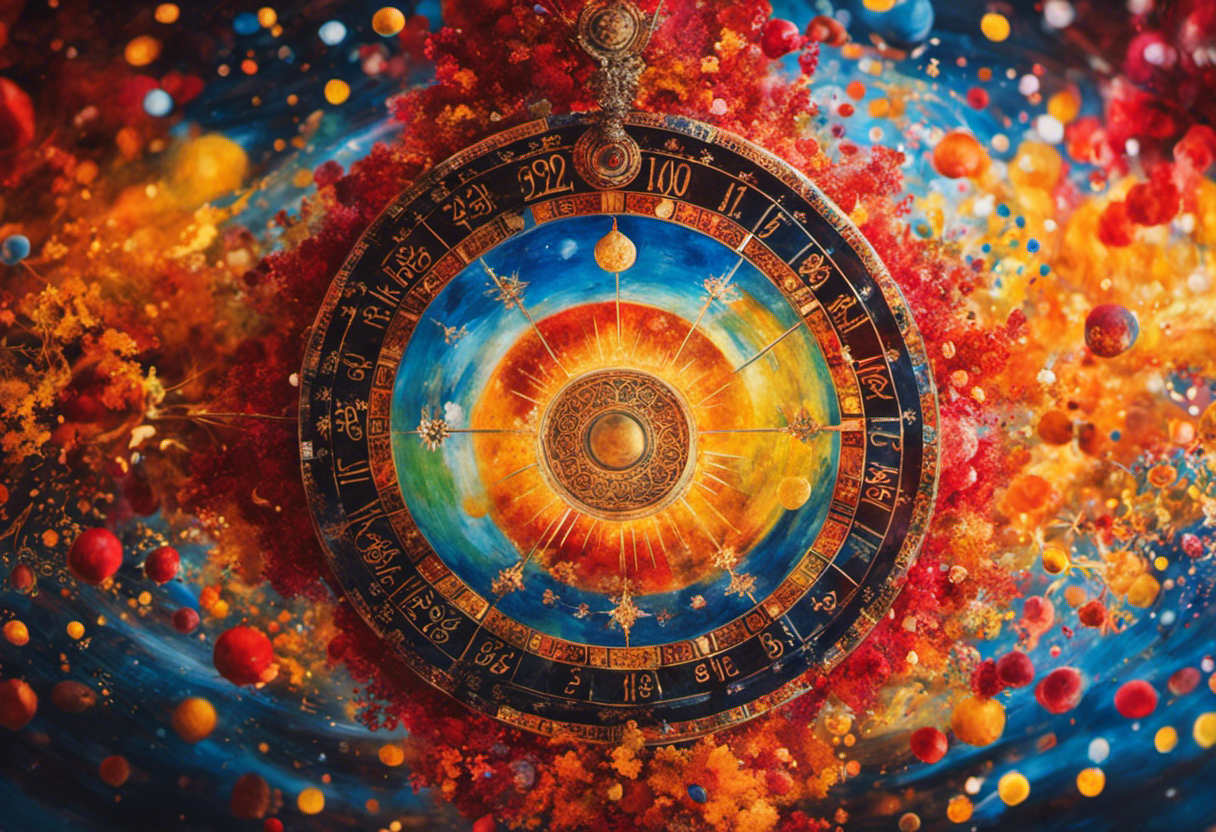

Contemporary artists have incorporated elements of the Zoroastrian calendar into their artwork, drawing upon its symbolism to convey a sense of continuity and interconnectedness between different aspects of life. The influence of the Zoroastrian calendar can be seen in various art forms, including painting, sculpture, and installation art.
Fashion: The Zoroastrian calendar has had a significant influence on fashion, with designers incorporating its symbols and motifs into their designs. From prints and patterns inspired by the celestial bodies to jewelry adorned with zodiac signs, the Zoroastrian calendar has become a source of inspiration for many fashion designers.
Music: The Zoroastrian calendar has also found its way into the world of music. Musicians have drawn upon the calendar’s symbolism to create songs that explore themes of time, cycles, and the interconnectedness of all things. By incorporating elements such as rhythmic patterns and melodic structures inspired by the Zoroastrian calendar, musicians are able to convey a sense of continuity and harmony in their compositions.
Literature: The Zoroastrian calendar has been referenced in various literary works, both in fiction and non-fiction. Authors have used the calendar’s symbolism to explore themes of time, fate, and the cyclical nature of life. By incorporating elements of the Zoroastrian calendar into their writing, authors are able to create a sense of depth and meaning in their work.
Visual Art: Visual artists have incorporated elements of the Zoroastrian calendar into their artwork, using its symbolism to create works that explore themes of interconnectedness and continuity. From paintings that depict celestial bodies to sculptures that represent the cyclical nature of life, the Zoroastrian calendar has provided artists with a rich source of inspiration.
Conclusion
In conclusion, the Zoroastrian calendar holds great significance in both literature and art. Its origins, symbolism, and representation in ancient texts and poetry highlight the cosmic order and spiritual beliefs of the Zoroastrian community.
Furthermore, the depiction of festivals and rituals in art provides insight into their cultural practices. Even in modern times, the Zoroastrian calendar continues to inspire contemporary literature and art.
An interesting statistic to engage the audience is that the Zoroastrian calendar is one of the oldest known calendars, dating back over 3,000 years.

